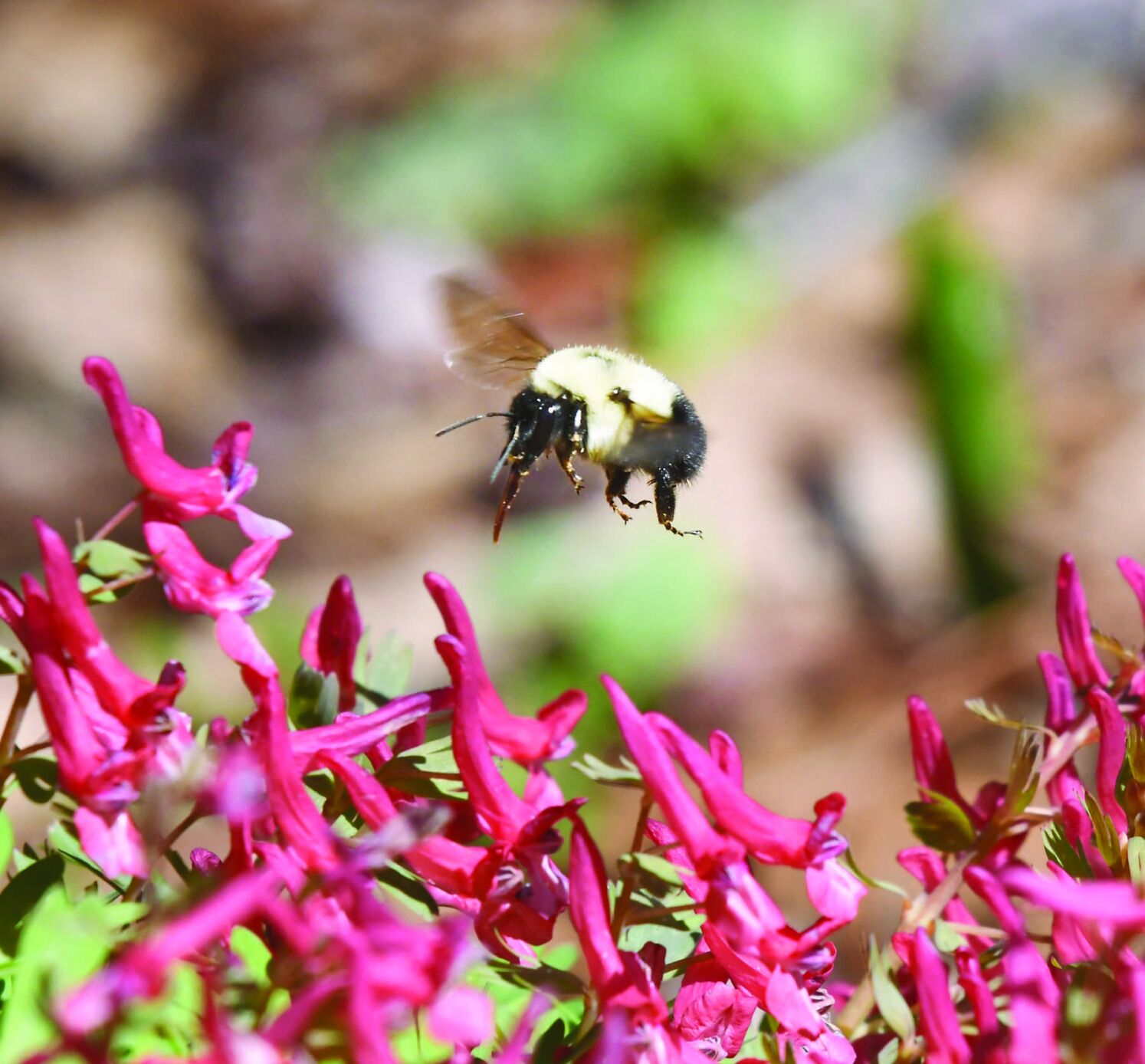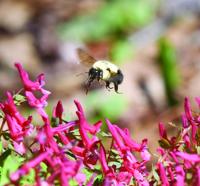These are the times that try men’s souls, wrote Thomas Paine in the opening of the first of a series of essays collectively titled “The American Crisis.” The debut article appeared in the pages of the Pennsylvania Journal on December 19, 1776, and it provided a much-needed spine-stiffener to George Washington’s beleaguered Revolutionary War army after a series of dispiriting defeats. The Father of Our Country had Paine’s nearly 3,500 words read aloud to the troops. They were moved and stirred, and you know the rest of the story.
Paine’s immortal first line—one of the best ever written—has come back to me again and again. But not, beleaguered readers, for the purpose of introducing a ventation about yet another political grievance. I kvetch, instead, about the weather and what it has done to my natural history observation schedule.
These are the meteorological times that are trying my soul. I suspect many of my fellow naturalists are similarly, well, Pained.
How do I loathe thee, April? Let me count the ways—at least a few.
As we celebrate Easter, Passover, and every nature lover’s favorite fete, Earth Day, the theme of the festivities revolves around rebirth, both spiritual and literal. Now it’s possible that, if the weather forecast when I’m writing this edition of the Journal on Thursday the 17th is at all accurate, we just may see temperatures warm enough to provide hope, to say nothing of a good reason to put the snow shovels into storage. I may no longer need to be a slave to the wood stove. In response to readings that could approach 70, our spring wildflowers, including the Twinleaf that has kept its two fat flower buds closed for entirely too long, could quickly burst into optimistic bloom. Maybe, just maybe, the twilight air will once again shimmer with the “dreams,” as Henry David Thoreau called the trills of American toads, and I’ll be pondside to observe the breeding antics of these marvelous amphibians. And perhaps—it could happen—there’ll be bees, flower flies, butterflies, and a host of other conspicuous-in-their-absence insects to finally document. Lord and weather willing, there may even be the first Ruby-throated hummingbirds arriving at the feeders, and a sky filled with birdsong and migrants.
But, at this writing, it has barely happened, and, based on previous records, the natural resurrection is notably overdue. While I’m not quite ready to book an appointment with an environmental grief counselor, I’m getting close.
What the heck is going on?
Where are the Mourning Cloak butterflies that should have, based on my data, been gloriously on the wing in the neighborhood of Saint Patrick’s Day last month? Where are the other members of the lepidopteran legions, such species as the Eastern comma, American Lady, Spring Azure, Eastern Tailed Blue, and the variety of duskywings and other early flying skippers that delight the eye as they sip nectar from April ephemerals?
So far this barely-spring, I’ve seen exactly one bumblebee, and that sighting was over so quickly I didn’t have the chance to retrieve my camera for a proof-of-viewing documentary photo. The persistence of cold temperatures and fewer-than-normal flowers sent the queen bee back to her underground nest, and she’s stayed put there for a few weeks. When will she be able to re-emerge and join her fellow queens in restoring bumble bee-dom to its throne?
Where’s global warming when we need it?
Many of the expected natural events, particularly those engaged in by “cold-blooded” creatures, like insects and amphibians, whose body temperature approximates that of their surroundings, are going to march in lockstep with whatever the weather wants to deliver. So, naturally, the persistent chill will deliver natural tardiness.
What was and has been missing from the Journal as I sat down to review and write may have been annoying, but it wasn’t necessarily worrisome. Indeed, the current backyard conundrum is probably more related to the curiously non-stop chill than to anything more ominous, from habitat destruction to global change. A brief injection of more normal April warmth should bring critters out of their winter refuges and into the sunshine.
And sure enough, by noontime on the 17th, with temperatures climbing towards 60, life was getting, well, lively. This was, alas, a mixed blessing.
Riding those warm winds was a cloud of hungry Black flies, sanguivorous insects whose stream-dwelling young had sensed the warmth and the increasing duration of sunlight and left their aquatic habitats in search of food. Even an old and leathery-skinned Naturalist would do in a hungry pinch.
But there were other critters on the wing, so I stood my ground, coordinated the hand and arm movements that would ward off any simuliids out for blood, and scanned the flowers for photogenic invertebrates. The floral stars of this week’s blossom show belong to a species botanists call Ranunculus ficaria, a.k.a. Lesser Celandine, which is a member of the Buttercup family. Originally a native of Europe, R. ficaria has so thoroughly colonized the wetter areas of the Northeast that it is widely regarded as a highly invasive pest. I was afflicted by these buttercups when I bought a boatload of garden soil that had Lesser Celandine tubers lurking within, so now one of my routine spring chores is to keep these buttercups within bounds.
In truth, I should just remove as many clumps as possible and aim a flamethrower at the rest, but I suffer the celandines because of their one main virtue. Pollinating insects love the shiny yellow blooms and enjoy resting on the equally shiny leaves, so I keep too many members of the species around because they provide me with lots of entomological photo ops. Too bad they don’t return the favor by curbing their invasive enthusiasm.
The celandines delivered, and in short order, I was documenting a happy wealth of flower flies, solitary bees, and a solitary bee nemesis known as a Bee Fly. Bombylius major, as taxonomists have named our dominant northeastern species, is also found in England, and in a splendid article about the species, the Natural History Museum of London termed the insect, a “cute bee mimic with a dark side.” (The story can be found at www.nhm.ac.uk/discover/bee-flies-cute-bee-mimic-with-a-dark-side.html.)
B. major is a fat-bodied, furry fly with bi-colored wings that blur at hummingbird speed and give the insect, which is able to hover in place, the overall look of a bee-hummer hybrid. They’re fun to watch and try to photograph on various flowers, including Lesser Celandine. But as they hover, you might see evidence of that darker personality as the females flick their eggs towards the ground. A closer inspection could give you their target: the subterranean nests of genuine bees.
The adult bee flies may be efficient, nectar-sipping pollinators, but their kids are monsters: parasites that invade the nurseries of solitary bee species and eat all the pollen that their hymenopteran parents had provided their children. Then, the larval flies proceed to slowly devour the hapless bee-lings. It’s a grim but necessary, in the bee fly world anyway, business, and I try not to think about what’s coming as I delight in watching each adult B. major hovering then landing during the day’s opening of the Bombyliidae season.
They weren’t alone. Soon enough, a fat female bumblebee queen buzzed into view, as she mined several different flower species for restoration after winter and early spring’s lean times in the calories department. The Twinleaf actually opened. Maybe the night would finally feature toads, and the holidays could live up to their reputation for rebirth. If we keep going in this direction, perhaps the times won’t be quite so trying, the natural times, anyway.






(0) comments
Welcome to the discussion.
Log In
Keep it Clean. Please avoid obscene, vulgar, lewd, racist or sexually-oriented language.
PLEASE TURN OFF YOUR CAPS LOCK.
Don't Threaten. Threats of harming another person will not be tolerated.
Be Truthful. Don't knowingly lie about anyone or anything.
Be Nice. No racism, sexism or any sort of -ism that is degrading to another person.
Be Proactive. Use the 'Report' link on each comment to let us know of abusive posts.
Share with Us. We'd love to hear eyewitness accounts, the history behind an article.